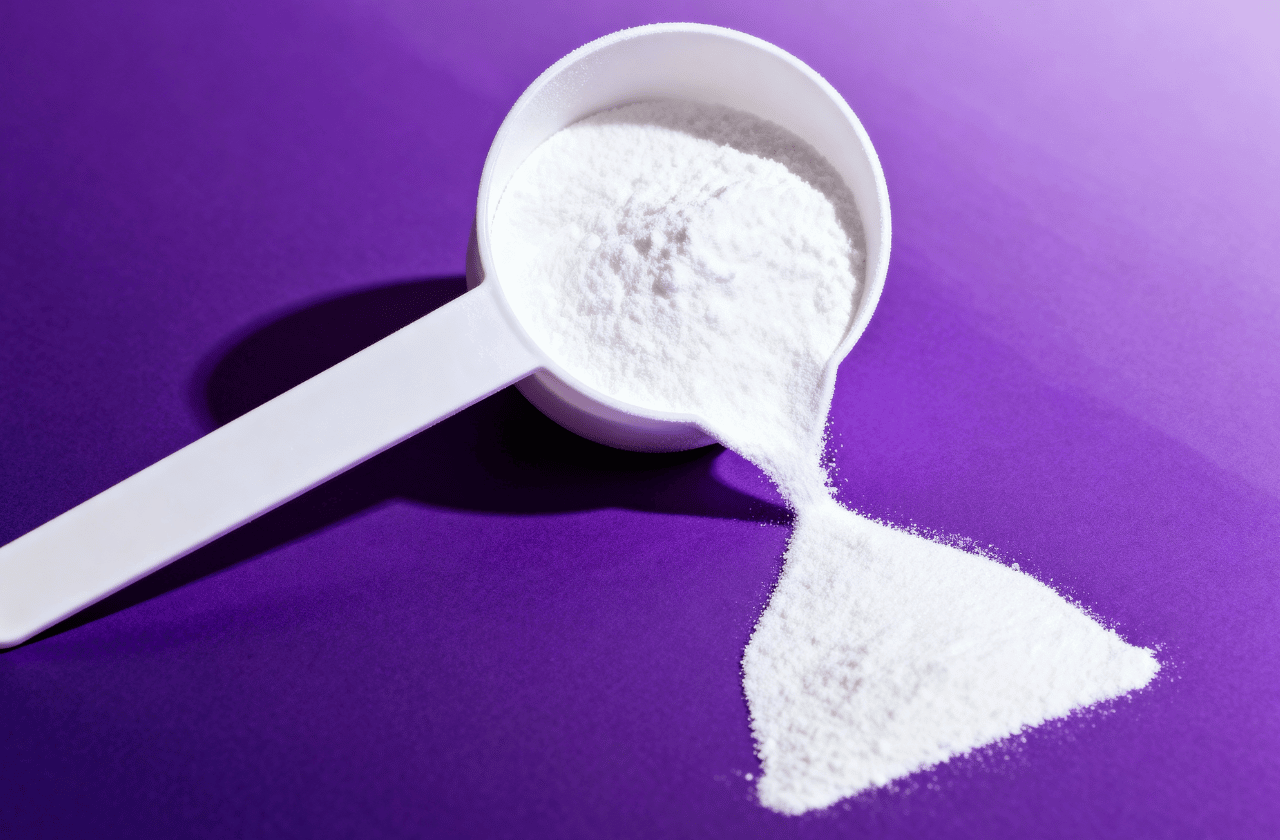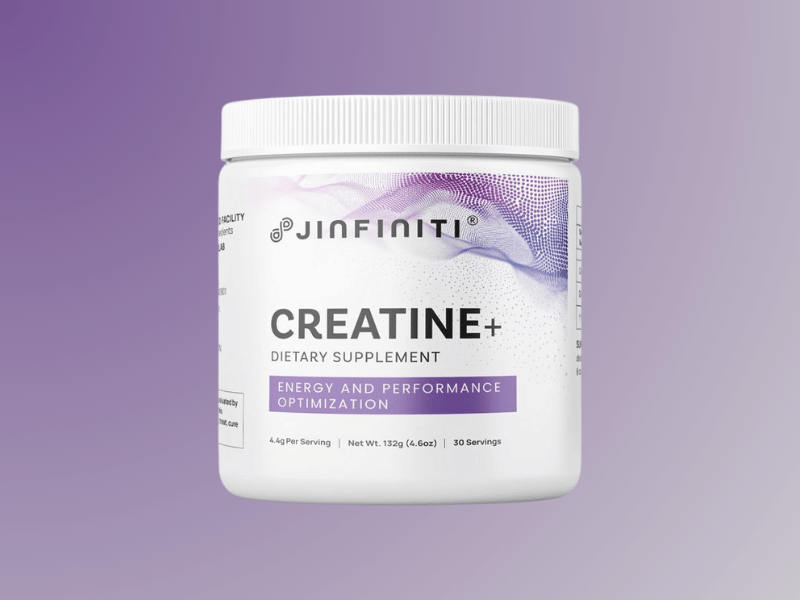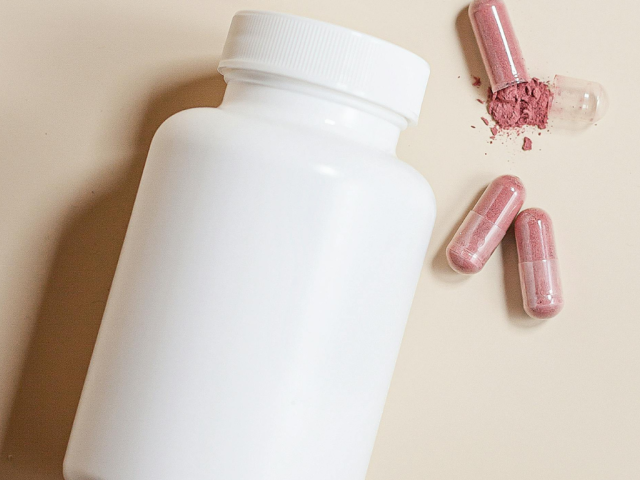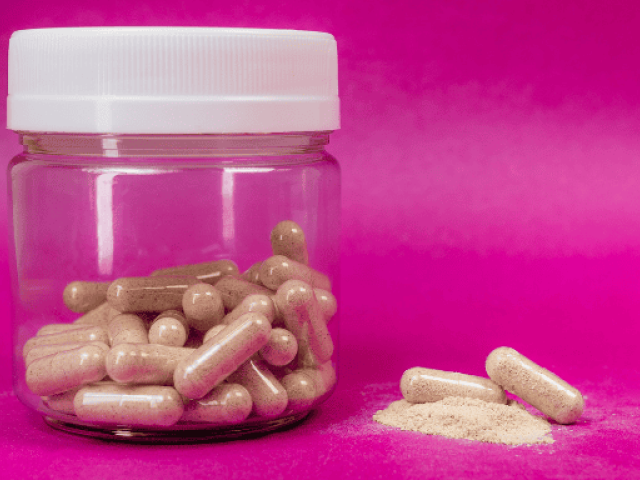
How Creatine Became an Anti-Aging and Longevity Essential

Creatine monohydrate has moved well beyond the bodybuilding aisle. A compound that scientists labelled a muscle-builder just a few years ago is now a healthy aging hero, with everyone from Rhonda Patrick to Andrew Huberman touting its benefits.
Studies on animals have shown creatine extended healthy lifespan by 9% which is over seven human years. But the benefits extend beyond simple longevity[1].
A 2025 study showed that synthesis and dietary intake of creatine progressively decline with age, which may interfere with the DNA-methylation patterns that predict biological aging and mortality risk[2].
Highlights
- A 2025 study links declining creatine levels with age to DNA methylation changes that predict mortality risk.
- When combined with resistance training, creatine helps older adults gain 3 pounds more lean muscle than exercise alone.
- Brain creatine can increase 11% with supplementation, supporting memory and executive function.
- At 3-5 grams daily, creatine monohydrate offers one of the most affordable, well-studied interventions for healthy aging.
Creatine and Biological Aging
The latest research directly links creatine to how we age at the cellular level.
DNA methylation patterns serve as biomarkers of biological aging. These “epigenetic clocks” like GrimAgeMort predict mortality risk more accurately than chronological age alone.
The 2025 research examining NHANES data showed that endogenous creatine production and dietary intake decrease with advancing age[2]. Older adults, specifically those aged 65 and above, seem most impacted.
In earlier research studies, it was discovered that the daily intake of 1 gram of creatine decreases deaths from all causes[3]. The longevity benefit appears real.
Creatine synthesis uses approximately 40% of the methyl groups from S-adenosylmethionine (SAM)[4]. SAM is a methyl donor which regulates gene expression through methylation of DNA. Over the years, the production of creatine lessens which could affect biological aging itself.

Energy Metabolism and Mitochondrial Function
Your cells run on ATP. Creatine and ATP work hand-in-hand to rapidly buffer energy in muscle, heart, and brain.
As you age, mitochondrial function declines. Energy production drops. Oxidative stress increases.
The mitochondrial creatine-kinesis system takes ATP synthesis to work. As we get older, metabolic efficiency starts dipping.
With creatine supplementation, mitochondrial DNA is enhanced[5], as well as the genes involved in oxidative phosphorylation that improve your respiratory capacity.
Reducing Lipofuscin Accumulation
Lipofuscin accumulates when cellular cleanup systems fail. This “aging pigment” increases oxidative stress and cell death.
A 2008 study found creatine-fed mice showed significantly lower brain lipofuscin compared to controls[1]. This correlated with improved behavior and extended healthy lifespan.
The mice also showed upregulation of genes tied to neuronal growth and neuroprotection.
Combating Muscle Loss
Sarcopenia affects 30% of people over 60 and 50% over 80[6]. On average, humans lose 30% of muscle mass by age 80.
The consequences include increased fall risk, reduced metabolic rate, and insulin resistance. Loss of skeletal muscle strength declines faster than mass itself.
A 2017 meta-analysis found adults over 50 who combined a creatine supplement with strength training gained three pounds more lean muscle than those taking placebo[7]. They also showed greater improvements in muscle strength on chest press and leg press exercises.
| Population | Lean Mass Gain | Duration |
|---|---|---|
| Males 50+ with training | 1.1-1.5 kg | 8-12 weeks |
| Females 50+ with training | 0.5-0.6 kg | 8-12 weeks |
| Without exercise | No change | 8-12 weeks |
Creatine and ATP work together to enhance capacity for higher-intensity exercise. It may also promote cell swelling that signals protein synthesis, helping to increase muscle mass over time.
“It’s not enough to just take creatine. You need to take creatine and exercise. You need to lift heavy.” — Dana Angelo White, Registered Dietitian
Read our article on the benefits of creatine without working outtofindoutifcreatineis still beneficial without exercise.
Brain Health and Cognitive Function
The brain consumes 20% of total body energy at rest. Creatine’s brain benefits include donating phosphate groups to regenerate ATP.
One 2025 pilot study in Alzheimer’s patients using 20 grams daily showed an 11% increase in brain creatine levels[8].
A 2024 meta-analysis revealed cognitive effects vary by population[9]:
- Adults aged 18-60 showed significant improvements
- Effects were not significant over age 60
- People with diseases showed particular benefits
- Women may benefit more, as they naturally store less creatine
Working memory and executive function improved most consistently. Both decline with age and Alzheimer’s.
Neuroprotection Research
Animal models show remarkable results. A 2004 study found 83% reduction in brain lesion volume after just two weeks[10].
Mechanisms include:
- Reducing caspase-3 activation (cell death enzyme)
- Preventing cytochrome c release from mitochondria
- Preserving ATP during stress
In Huntington’s disease models, creatine slowed brain tissue loss and improved survival when given early[11].
Translating animal success to humans has proven challenging. Large trials in Parkinson’s disease showed no clinical benefit[12]. ALS trials were similarly disappointing.
Creatine for Women and Menopause
Women naturally produce 70-80% less creatine than men. They also consume less animal protein, meaning lower dietary creatine.
Hormonal changes during menopause affect both creatine production and utilization. This makes creatine particularly valuable during this transition.
“Creatine stands poised to assist with several common midlife health symptoms.” — Dr. Hannah Cabré, Pennington Biomedical Research Center
Post-menopausal women who combined creatine with strength training gained more lean muscle than placebo, though effects on muscle strength and mass were more modest than in men (0.5-0.6 kg vs 1.1-1.5 kg).
A two-year study showed positive impacts on bone properties and lean mass when combined with resistance exercise[13].
Dosage and Forms
For older adults, two approaches work:
| Protocol | Dosage | Duration | Notes |
|---|---|---|---|
| Loading | 20g/day (4x5g doses) | 5-7 days | Then 3-5g daily |
| Maintenance | 3-5g/day | Ongoing | Takes 4 weeks to saturate |
| Brain benefits | 10-20g/day | Ongoing | Higher doses may be needed |
Creatine monohydrate remains the gold standard. It’s the most researched creatine supplement form with proven efficacy and safety.
Micronized creatine improves solubility but provides no performance advantage. Creatine HCl claims better absorption at lower doses, but far less research supports it. Other forms haven’t shown superiority in controlled studies.
Safety Profile
The FDA classified creatine as Generally Recognized as Safe (GRAS) in 2020.
- Kidney concerns: Research shows no kidney damage in healthy individuals, even at 20 grams daily for 24 months[14]. Creatine increases blood creatinine (a metabolite), but this represents a benign increase, not dysfunction. Creatine should be avoided by those who are suffering from kidney disease or should only use it under supervision by medical professionals.
- Common side effects: Minor GI issues (bloating, cramping, diarrhea) during loading phases. These typically resolve with continued use.
- No evidence: Research finds no support for creatine myths about hair loss, dehydration, or muscle cramping.
Dietary Sources of Creatine
Creatine comes primarily from animal products:
| Food | Creatine | Serving |
|---|---|---|
| Herring | 1.25g | 4 oz |
| Beef | 0.41-0.5g | 3-4 oz |
| Pork | 0.5-0.57g | 4 oz |
| Salmon | 0.5g | 4 oz |
| Tuna | 0.45g | 4 oz |
| Chicken | 0.3-0.45g | 4-6 oz |
Plant-based foods contain essentially no creatine. This explains why vegans and vegetarians usually have lower muscle stores.
The body is capable of making 1-2 grams of it daily using glycine, arginine and methionine. Another 1-2 grams comes from diet in omnivores.
A 2025 study found endogenous synthesis (41.9 mg/kg/day) was 2.7 times higher than dietary intake (15.5 mg/kg/day)[15]. Creatine precursor availability declined with age, lowest in people 65 and older.
Expert Perspectives on Creatine for Longevity
Despite decades of research, expert opinions remain nuanced. The beneficial effect of creatine supplementation appears strongest when combined with resistance training in older adults.
Dr. Andreas Bender, who conducted the landmark mouse longevity study, concluded “creatine may be a promising food supplement to promote healthy human aging.”[1]
But translating animal success to humans has proven difficult. Reviewing clinical trials, Dr. Bender noted in 2016 that “the use of creatine supplementation has so far proved disappointing in clinical studies with a number of symptomatic neurodegenerative diseases.”[12]
The International Society of Sports Nutrition emphasizes that creatine’s benefits manifest most clearly in the context of training adaptations[16].
“At Jinfiniti, we recognize that supporting cellular energy becomes increasingly important as we age. While creatine shows promise for maintaining muscle mass and cognitive function, it works best as part of a comprehensive approach to healthy aging that includes proper nutrition, regular exercise, and monitoring key biomarkers like NAD+ levels.” — Dr. Jin-Xiong She, Founder of Jinfiniti Precision Medicine
Dr. Richard Kreider argues that “creatine supplementation is safe, beneficial throughout the lifespan, and should not be restricted.”[17]
Who Should Consider Creatine?
Based on current evidence:
- Older adults engaged in resistance training
- Post-menopausal women experiencing accelerated muscle and bone loss
- People with physically demanding jobs
- Those concerned about cognitive decline
- Vegetarians and vegans with lower stores
Who Should Exercise Caution?
- People with pre-existing kidney disease (avoid or use under supervision)
- Those taking medications affecting kidney function
- Older adults with very low kidney function may need monitoring
Maximizing Benefits
- Combine with resistance training 2-3 times per week
- Be consistent with daily supplementation
- Ensure adequate protein intake
- Stay hydrated
- Give it time (3-4 weeks for saturation, months for adaptations)
Do Anti-Aging Benefits Signal Market Growth?
The global market for creatine was $1.11 billion in 2024 and is projected to reach $4.21 billion by 2030. That’s 25% annual growth.
Creatine for cognition and healthy aging represented just 6.4% of the market in 2025, but this niche is expanding rapidly.
Bloomberg reported that creatine sales surged 75% from 2020. Women and older adults represent the fastest-growing demographic.
Bottom Line: A Supplement Comes of Age
Creatine’s journey from a bodybuilding supplement to longevity tool mirrors evolving science and transition to evidence-based healthy aging.
The 2025 study correlating dietary creatine to epigenetic markers of biological aging takes things deeper. Both synthesis and intake reduce with age, especially over the age of 65, leading to a widening gap between need and availability in seniors.
Combating sarcopenia is where the evidence is strongest when it is combined with resistance exercise. Aging adults must consider this since muscle loss greatly impacts one’s lifestyle and can cause loss of independence.
Creatine is not a magic bullet. The advantages will be effective as long as you have an active lifestyle, eat well, and supplement regularly. For those who are ready to make lifestyle changes while taking creatine, it can be a well-tolerated, affordable, and science-backed tool for improving lifespan and healthspan.
With the aging of the global population, approaches that can impact multiple aspects of aging are increasingly relevant. Creatine has had a 190 year history as a laboratory curiosity through to a longevity essential. It may finally have its most important use yet.
Ready to take control of your cellular health? You can try our Creatine + ATP or test your NAD+ levels to see where your cellular energy stands.
Referenced Sources
- Bender A, Beckers J, Schneider I, Hölter SM, Haack T, Ruthsatz T, et al. Creatine improves health and survival of mice. Elsevier BV; 2008. https://doi.org/10.1016/j.neurobiolaging.2007.03.001
- Ostojic SM, Kavecan I. Linking dietary creatine to DNA methylation-based predictors of mortality in individuals aged 50 and above. S. Karger AG; 2025. https://doi.org/10.1159/000547260
- Ostojic SM. Dietary creatine intake and all-cause mortality among U.S. adults: a linked mortality analysis from the NHANES study. Canadian Science Publishing; 2025. https://doi.org/10.1139/apnm-2025-0001
- Broca-Brisson L, Disdier C, Harati R, Hamoudi R, Mabondzo A. Epigenetic alterations in creatine transporter deficiency: a new marker for dodecyl creatine ester therapeutic efficacy monitoring. Frontiers Media SA; 2024. https://doi.org/10.3389/fnins.2024.1362497
- Gowayed M, Mahmoud S, El‑Sayed Y, Abu‑Samra N, Kamel M. Enhanced mitochondrial biogenesis is associated with the ameliorative action of creatine supplementation in rat soleus and cardiac muscles. Spandidos Publications; 2019. https://doi.org/10.3892/etm.2019.8173
- Smith RN, Agharkar AS, Gonzales EB. A review of creatine supplementation in age-related diseases: more than a supplement for athletes. F1000 Research Ltd; 2014. https://doi.org/10.12688/f1000research.5218.1
- Chilibeck P, Kaviani M, Candow D, Zello GA. Effect of creatine supplementation during resistance training on lean tissue mass and muscular strength in older adults: a meta-analysis. Informa UK Limited; 2017. https://doi.org/10.2147/oajsm.s123529
- Smith AN, Choi I, Lee P, Sullivan DK, Burns JM, Swerdlow RH, et al. Creatine monohydrate pilot in Alzheimer’s: Feasibility, brain creatine, and cognition. Wiley; 2025. https://doi.org/10.1002/trc2.70101
- Xu C, Bi S, Zhang W, Luo L. The effects of creatine supplementation on cognitive function in adults: a systematic review and meta-analysis. Frontiers Media SA; 2024. https://doi.org/10.3389/fnut.2024.1424972
- Zhu S, Li M, Figueroa BE, Liu A, Stavrovskaya IG, Pasinelli P, et al. Prophylactic Creatine Administration Mediates Neuroprotection in Cerebral Ischemia in Mice. Society for Neuroscience; 2004. https://doi.org/10.1523/jneurosci.1278-04.2004
- Andreassen O, Dedeoglu A, Ferrante R, Jenkins B, Ferrante K, Thomas M, et al. Creatine increase survival and delays motor symptoms in a transgenic animal model of Huntington’s disease. Neurobiology of Disease 2001;8 3:479–91.
- Bender A, Klopstock T. Creatine for neuroprotection in neurodegenerative disease: end of story?. Springer Science and Business Media LLC; 2016. https://doi.org/10.1007/s00726-015-2165-0
- Smith-Ryan AE, DelBiondo GM, Brown AF, Kleiner SM, Tran NT, Ellery SJ. Creatine in women’s health: bridging the gap from menstruation through pregnancy to menopause. Informa UK Limited; 2025. https://doi.org/10.1080/15502783.2025.2502094
- Longobardi I, Gualano B, Seguro AC, Roschel H. Is It Time for a Requiem for Creatine Supplementation-Induced Kidney Failure? A Narrative Review. MDPI AG; 2023. https://doi.org/10.3390/nu15061466
- Nedeljkovic D, Ostojic SM. Dietary exposure to creatine-precursor amino acids in the general population. Springer Science and Business Media LLC; 2025. https://doi.org/10.1007/s00726-025-03460-7
- Kreider RB, Kalman DS, Antonio J, Ziegenfuss TN, Wildman R, Collins R, et al. International Society of Sports Nutrition position stand: safety and efficacy of creatine supplementation in exercise, sport, and medicine. Informa UK Limited; 2017. https://doi.org/10.1186/s12970-017-0173-z
- Kreider RB, Jagim AR, Antonio J, Kalman DS, Kerksick CM, Stout JR, et al. Creatine supplementation is safe, beneficial throughout the lifespan, and should not be restricted. Frontiers Media SA; 2025. https://doi.org/10.3389/fnut.2025.1578564

Get weekly health insights and exclusive offers by joining our newsletter.










